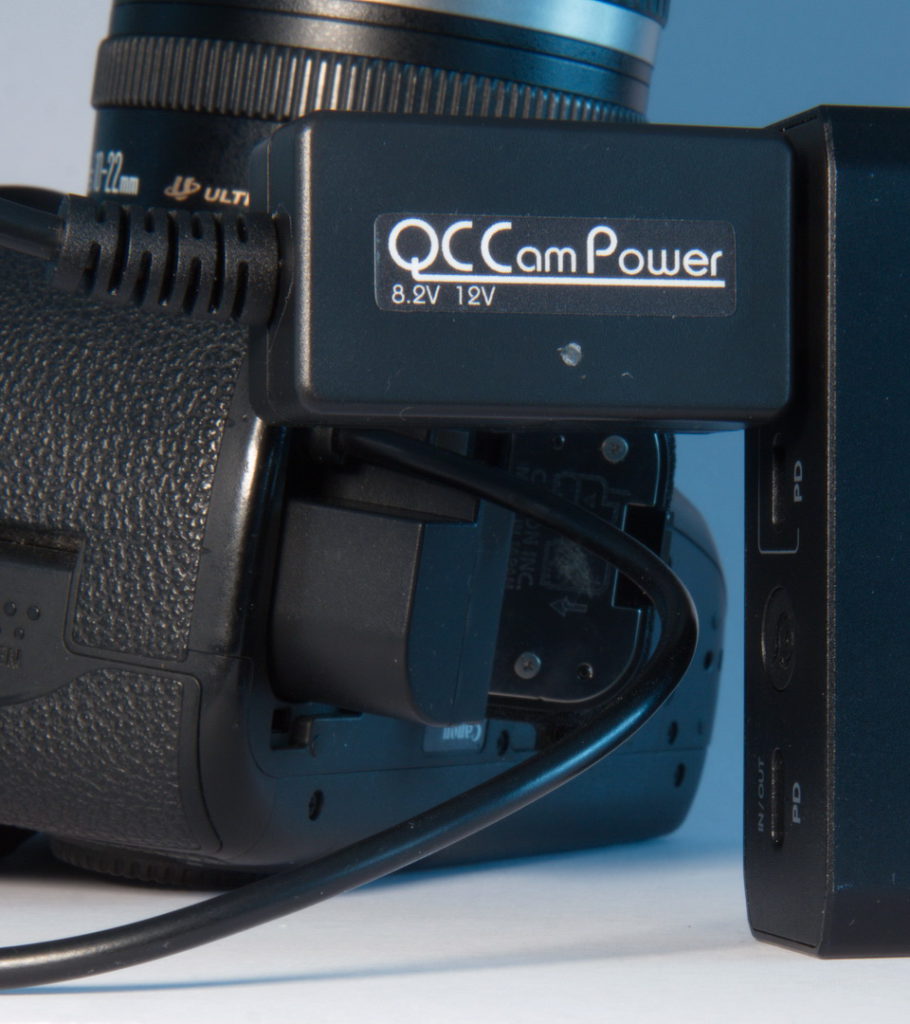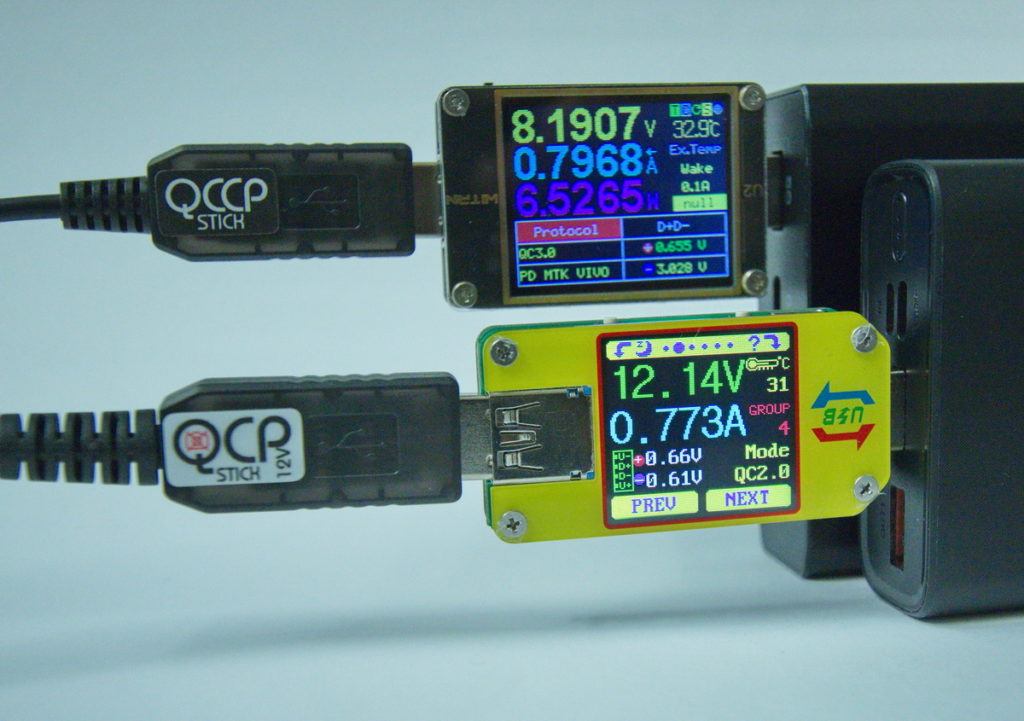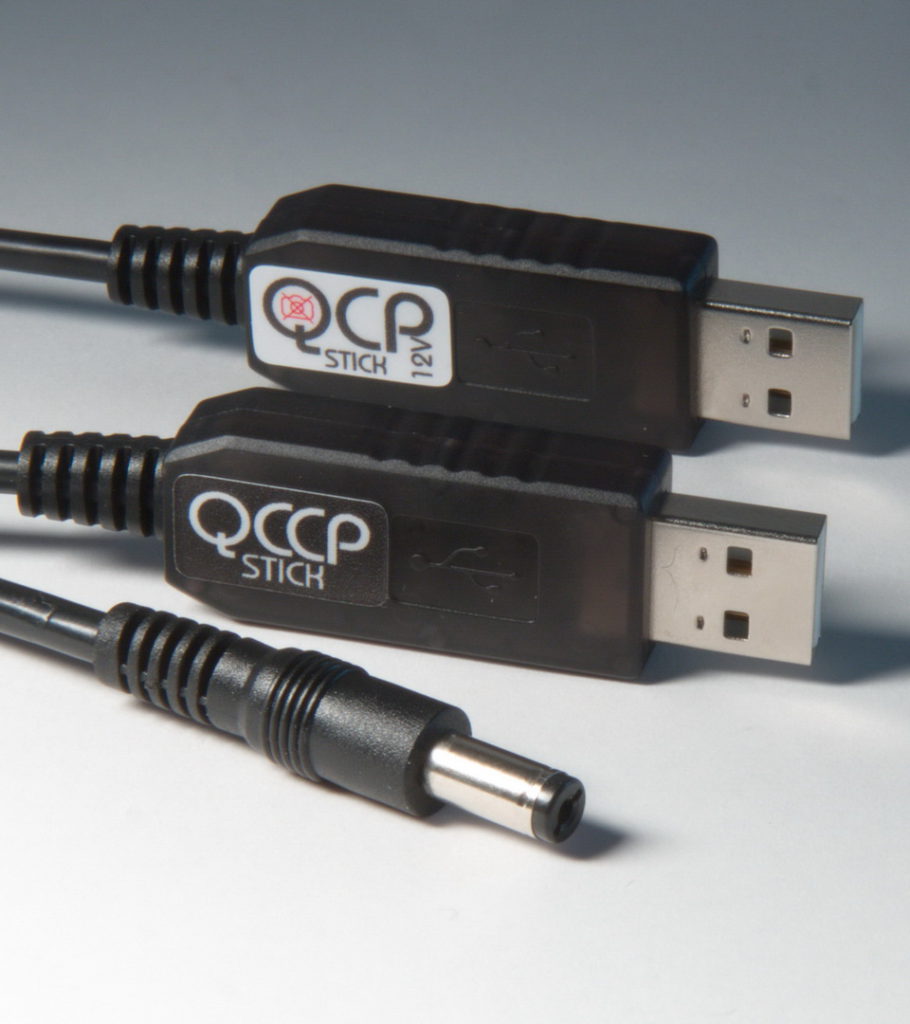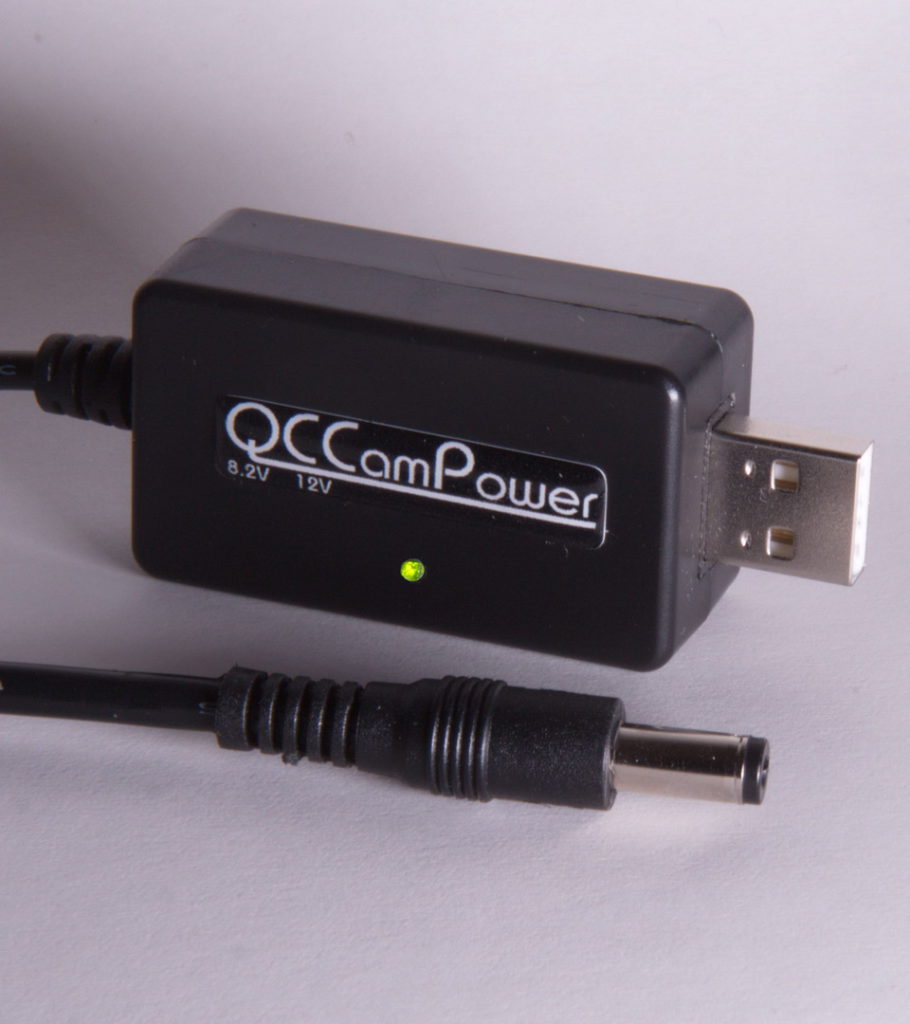How much capacity should a powerbank have for which use?
I have often been asked this question. I can’t really answer it, because it depends on many factors. You could certainly just go to the available capacity limit to have certainty that the capacity is sufficient. But capacity goes hand in hand with size, weight and ultimately price.
The correct standard of power bank Quick Charge 3.0 or 2.0:
A basic requirement for a power bank to operate with the QCCP / QCCP stick is the availability of the Quick Charge standard 3.0 or at least 2.0 (QC3.0 / 2.0).
Many PBs indicate this by stating QC3.0 in the description for the corresponding USB port. If necessary, you can also check the label on the PB itself.
USB-A (OUT1) Output: 5V⎓3.0A 9V⎓2.0A 12V⎓1.5A . This specification shows that the USB port can also supply voltage greater than the standard of 5V and is thus QC capable.
The following is specified for the USB port of the PB:
Output DC 5V 2A MAX
it is a powerbank or at least a USB port without QC (only 5V) and thus the QCCP stick does not work!
Camera battery compared to the powerbank:
A camera battery often has a specified capacity of 1,800mAh. Powerbanks are offered with capacities from 10,000 to 30,000mAh and more. So it is obvious to calculate:
PB capacity / camera battery capacity = factor of capacity increase.
e.g. PB with 20.000mAh / 1.800mAh (camera battery) = factor 11,11
That would be nice, but is unfortunately wrong.
The real capacity of the powerbank:
A little theory is required for understanding. But I try to explain it as simple as possible!
For camera batteries as well as for powerbanks lithium-ion battery cells are used. These Li-Io cells have a voltage of nominal (empty) 3.7V and a capacity of 1,600 up to 2,800mAh. In a camera battery, 2 of these cells (e.g. with 1,800mAh) are connected in series, resulting in a voltage of 7.4V (2×3.7V), but the capacity remains that of one cell of 1800mAh.
In a powerbank, several of these battery cells are connected in parallel. A PB with e.g. 20.000mAh consists of 8 li-Io cells with 2.500mAh each, but only 3,7V.
If 5V are generated from this for the USB ports, the capacity is reduced. This results from the following calculation:
3.7V / 5V = 0.74 > 20,000mAh *0.74 = 14,800mAh
This means that at a 5V USB port of a 20.000mAh PB only a capacity of 14.800mAh is available. If now 8.2V are generated from the 3.7V for the camera, the capacity is reduced once more:
3.7V / 8.2V = 0.45 > 20,000mAh *0.45 = 9000mAh.
Unfortunately, this is not all. During this voltage conversion there are also losses. With good PBs I would calculate a loss of 10% with cheap ones of 20%. This means that with the above powerbank and the supply of a camera with 8.2V, a capacity of 7,200 – 8,100mAh is available in real terms.
So compared to the above calculation, only a factor of:
7,200mAh / 1,800mAh (camera battery) = factor of 4.
How long does the capacity of a powerbank hold:
This depends on the application and can therefore not be stated in general. But as a rule of thumb, you can use the following as a basis:
If the battery charge of the camera is sufficient for e.g. 2 hours, you can operate the camera 4x longer, i.e. 8 hours, with a 20,000mAh powerbank according to the above calculation.
Or another calculation: If the camera battery is sufficient for 600 shots, you can take 2,400 shots with the 20,000mAh PB.
Which powerbank do I need for my application:
The previous calculation already gives a clue for the choice of the power bank’s capacity. However, if you also plan to shoot at night, where a lens heater is also used and this is also to be supplied with the same power bank, it looks different again. However, this also requires that the powerbank also enables dual mode (camera with QCCP stick on one USB port and the heater in parallel on a second 5V USB port). A typical lens heater requires a current of 1A, i.e. 1,000mAh. According to the above calculation, you then have to add 1,000mAh per hour of use for it.
There are powerbanks with 50.000mAh and more. These are often equipped with a DC 12V port or even a 230V outlet. A 12V port can be quite useful for the additional supply of a slider. 230V is probably not needed. These additional features require electronics that you pay for, but don’t need. The weight is also higher as a result.
I tend to use several smaller powerbanks here. So you can run the camera and the lens heater with one PB each. But if you only need the PB for the camera, you save weight.
For special applications where more capacity is needed, you can use my PB HotSwap or PB HotSwap QC adapter to change the powerbank without interruption, or connect 2 PBs in parallel and thus increase the capacity.
Powerbank when traveling:
This is also an issue that should not be ignored when choosing a PB. Airlines have now limited the power of powerbanks that can be carried in hand luggage to a maximum of 100Wh (watt hours).
Backwards calculation: 100Wh / 3.7V = 27,000mAh
This means that powerbanks with a capacity of more than 27,000mAh may not be carried in hand luggage. However, 2 smaller PBs are quite possible.
Powerbank charging:
If the powerbank is empty, it should be possible to charge it as quickly as possible. Older and cheap powerbanks usually have a micro USB port for charging the PB. Charging times of 6-8 hours and more are not uncommon. If a USB-C port with PD (Power Delivery) is available for charging, charging times of 2 hours and less are possible. However, a corresponding charger with PD is required.
Conclusion.
It does not always have to be the largest possible powerbank, unless the capacity is really needed. For most TL and Astro applications, powerbanks with a capacity of 15,000 – 20,000mAh are quite sufficient. If sometimes more is needed, using my PB HotSwap adapter and another smaller powerbank is a flexible solution. Because only when you need more, you take more. Often 2 smaller PB are also cheaper than a large one.




